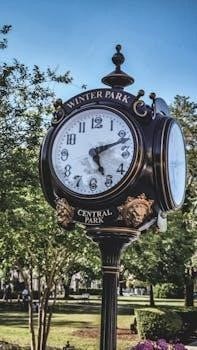400-day clocks, also known as anniversary clocks, are fascinating timepieces. This guide will provide a comprehensive overview of repairing these clocks. You will learn the history, types, common problems, and repair techniques.
Brief History and Significance
The 400-day clock, a marvel of horological engineering, emerged in the late 19th century. These clocks, also referred to as anniversary clocks, are designed to run for approximately one year on a single winding. Their invention offered a unique blend of convenience and elegance, capturing the attention of clock enthusiasts and homeowners alike.
The significance lies not only in their extended running time but also in their intricate mechanisms and aesthetic appeal. The torsion pendulum, a key component, contributes to the clock’s distinctive slow, mesmerizing rotation. Repairing these clocks demands specialized knowledge.
Identifying Your 400-Day Clock
Using Back Plate Illustrations (Horolovar Guide)
Properly identifying your 400-day clock is crucial for successful repair. The Horolovar 400-Day Clock Repair Guide offers actual-size back plate illustrations. These illustrations will assist in accurate identification.
Using Back Plate Illustrations (Horolovar Guide)
The Horolovar 400-Day Clock Repair Guide is invaluable for identifying your clock. It contains actual-size back plate illustrations. Use these illustrations to match your clock’s back plate. This step is crucial before attempting any repairs. The guide also references suspension spring and mainspring sizes specific to each clock model. Identifying the clock using this guide makes finding the right parts much easier; This ensures that you use the correct components during the repair process. This method is a cornerstone of successful 400-day clock repair.
Common Problems in 400-Day Clocks
400-day clocks are susceptible to specific issues that cause them to stop. This guide will provide you with common troubleshooting steps. These techniques can help you identify and resolve problems efficiently.
Troubleshooting Guide
When a 400-day clock stops, several factors may be at play. Begin by checking the clock’s levelness, as even slight imbalances can halt its operation. Examine the suspension spring for any signs of damage. Look for kinks, bends, or breaks. Ensure the pendulum swings freely, unhindered by any obstructions.
Verify that the clock is properly wound, providing sufficient power. A lack of lubrication can also cause friction, impeding movement. Furthermore, inspect the gears for dirt. Even minor debris can disrupt the clock’s delicate mechanics. Addressing these issues can often restore functionality.
Repairing 400-day clocks requires specialized tools. These include screwdrivers, tweezers, oilers, and cleaning solutions. Having the right equipment ensures efficient and safe repair.
Essential Tools for Repair
List of Necessary Equipment
To effectively service a 400-day clock, a specific set of tools is crucial. These tools will facilitate disassembly, cleaning, and reassembly. Essential items include a variety of screwdrivers (both flathead and Phillips), fine-tipped tweezers for handling delicate parts, and specialized oilers for precise lubrication. A cleaning solution, such as isopropyl alcohol, is also necessary for removing dirt and grime. Additionally, having a set of pin vises, staking tools, and a suspension spring tool will significantly aid in the repair process, ensuring accuracy and preventing damage to the intricate components of the clock.
Carefully disassemble the 400-day clock, noting each component’s position. Document every step with photos. This will help with reassembly. Pay close attention to the suspension spring.
Before starting, ensure you have a clean workspace and proper lighting. Begin by carefully removing the dome. Next, detach the pendulum, noting its orientation. Then, gently loosen and remove the hands using a hand puller. Proceed to disassemble the movement plates, one layer at a time, documenting each step with photographs or detailed notes. Pay close attention to the gear train and escapement. Handle the suspension spring with extreme care to avoid damage. Keep all screws and small parts organized in labeled containers to avoid confusion during reassembly. Remember safety first!
After disassembly, meticulously clean each component. Inspect gears for wear, and pivots for damage. Proper cleaning and inspection are crucial for reliable 400-day clock operation.
Cleaning and Inspection
Detailed Cleaning Techniques
Begin by carefully removing any loose dust or debris with a soft brush. For more stubborn grime, use specialized clock cleaning solutions, ensuring they are safe for the materials involved. Avoid harsh chemicals that could damage delicate parts. Ultrasonic cleaners can be effective for small components, but use them with caution and follow the manufacturer’s instructions. After cleaning, thoroughly rinse each piece with distilled water and allow them to dry completely before reassembly. Inspect each part meticulously for wear or damage;
Replacing the suspension spring is crucial. Use the Horolovar guide for identification. Select the correct spring size to ensure proper clock function and accurate timekeeping.
Suspension Spring Replacement
Choosing the Correct Spring
Selecting the correct suspension spring is paramount for accurate timekeeping in 400-day clocks. The Horolovar guide is indispensable for this process. It provides essential data, including the appropriate spring size for specific clock models. Using the wrong spring can lead to inaccurate timekeeping or even damage the clock’s delicate mechanism.
Proper identification of the clock model using back plate illustrations within the guide ensures the right spring is chosen. This prevents issues such as irregular pendulum swings or complete stoppage of the clock. Accurate selection guarantees optimal performance.

Mainspring Servicing
Servicing the mainspring involves careful winding and thorough inspection. This ensures proper energy storage and release. Look for any signs of wear, damage, or improper lubrication.
Winding and Inspection
Mainspring servicing is critical for the reliable operation of 400-day clocks, requiring a meticulous process of winding and inspection. Start by carefully releasing any stored energy in the mainspring using a specialized let-down tool. Examine the mainspring for signs of wear, corrosion, or damage. Check for any cracks, deformities, or weakened areas that could affect its performance. Proper lubrication is also crucial, and the mainspring should be cleaned and re-oiled with appropriate clock oil. Ensure the winding arbor and related components are free from debris and function smoothly to guarantee consistent power delivery.

Oiling and Lubrication
Proper oiling and lubrication are crucial for the longevity of 400-day clocks. Apply appropriate clock oil to specific points. This ensures smooth operation and prevents wear on moving parts.
Proper Lubrication Points
Identifying the correct lubrication points is vital for maintaining a 400-day clock. Focus on areas with friction, such as pivots and gears. Applying a tiny drop of high-quality clock oil to these points reduces wear and ensures smooth operation. Avoid over-oiling, as excess oil can attract dust and hinder movement. Consult a repair guide for specific lubrication locations for your clock model. Remember, proper lubrication extends the life of your clock. Use synthetic oil, it does not dry out.
Reassembly Process
The reassembly process requires patience and precision. Refer to your disassembly notes. Carefully reverse the steps, ensuring each component is correctly positioned. Check for proper alignment and smooth movement before proceeding.
Disassembly Process
Step-by-Step Instructions
Begin by carefully removing the dome covering the clock. Next, detach the pendulum, noting its orientation. Gently release the suspension spring from its mounting point. Proceed to dismantle the clock’s components systematically, taking detailed notes and photographs for reference during reassembly. Pay close attention to the order in which parts are removed, and store them securely to prevent loss or damage. Carefully handle delicate parts. Note any worn components. Document the placement of washers and screws. This meticulous approach will greatly aid in the subsequent reassembly process.

Regulation and Adjustment
After reassembly, regulate your 400-day clock. Fine-tune the clock’s accuracy by carefully adjusting the pendulum. Observe the clock’s performance over several days. Make small adjustments as needed for optimal timekeeping.
Fine-Tuning the Clock’s Accuracy
Achieving accurate timekeeping with a 400-day clock requires careful regulation and adjustment. Begin by observing the clock’s performance over a period of several days, noting whether it is gaining or losing time. The adjustment is typically made by slightly altering the position of a small regulating nut or screw located on the pendulum. Moving the nut upward will cause the clock to run slower, while moving it downward will cause it to run faster. Make very small adjustments and allow the clock to run for another day before making further changes. This iterative process is crucial for achieving the desired accuracy. Patience and precision are key to successfully fine-tuning your 400-day clock.

Maintenance Tips for Longevity
To ensure your 400-day clock lasts, regular maintenance is key. Proper placement, avoiding extreme temperatures, and periodic cleaning will extend its life. Also, ensure proper lubrication as needed.
Preventative Measures
To maximize the lifespan of your cherished 400-day clock, adopting proactive measures is paramount. Firstly, ensure the clock rests on a stable, level surface to prevent irregular pendulum motion. Shield it from direct sunlight and avoid placement near heat sources or drafty areas, as temperature fluctuations can affect accuracy and component integrity. Regularly dust the clock’s exterior with a soft cloth to prevent buildup. Schedule professional servicing every few years for cleaning, lubrication, and inspection of critical parts to address potential issues before they escalate. These preventative steps safeguard your clock.